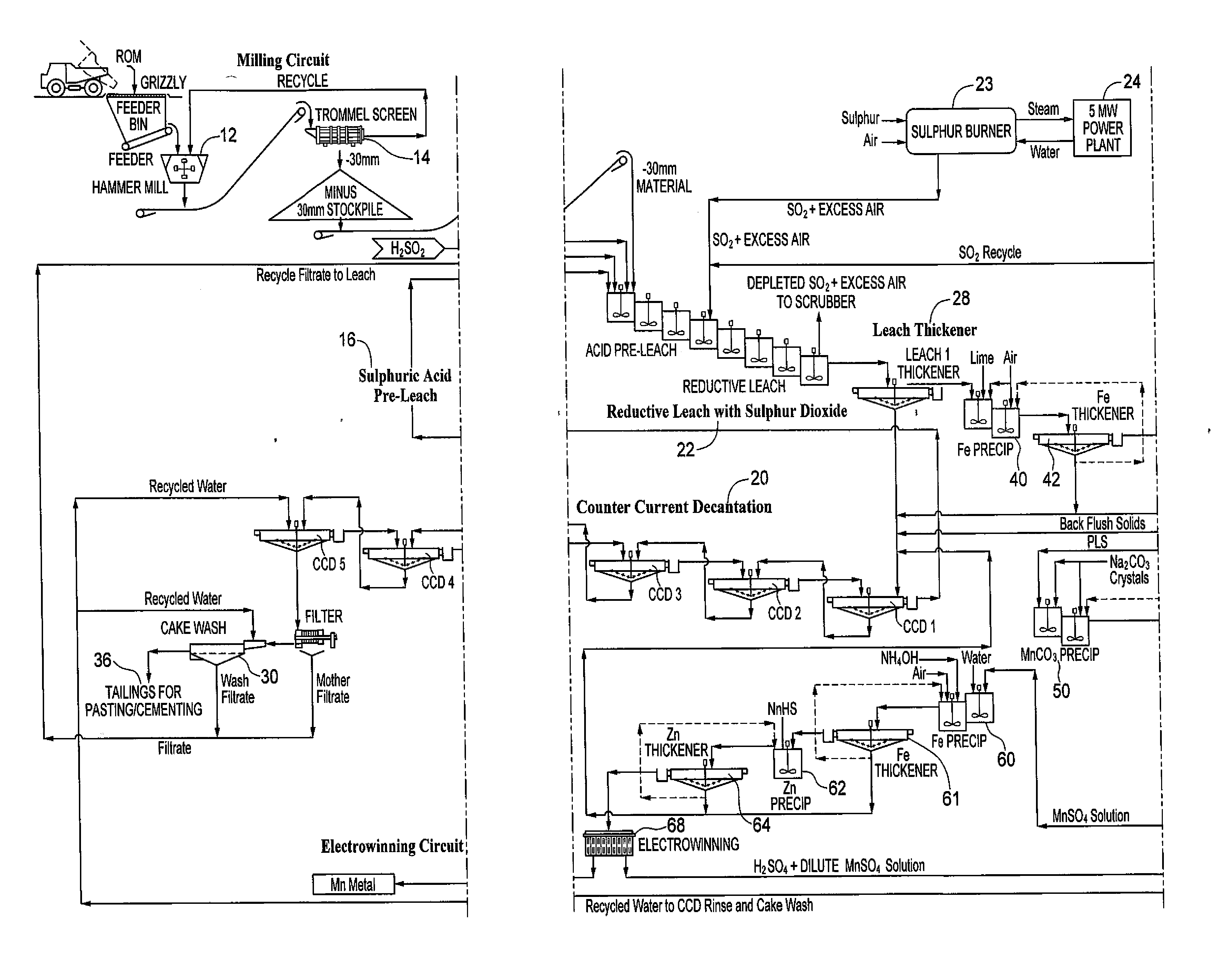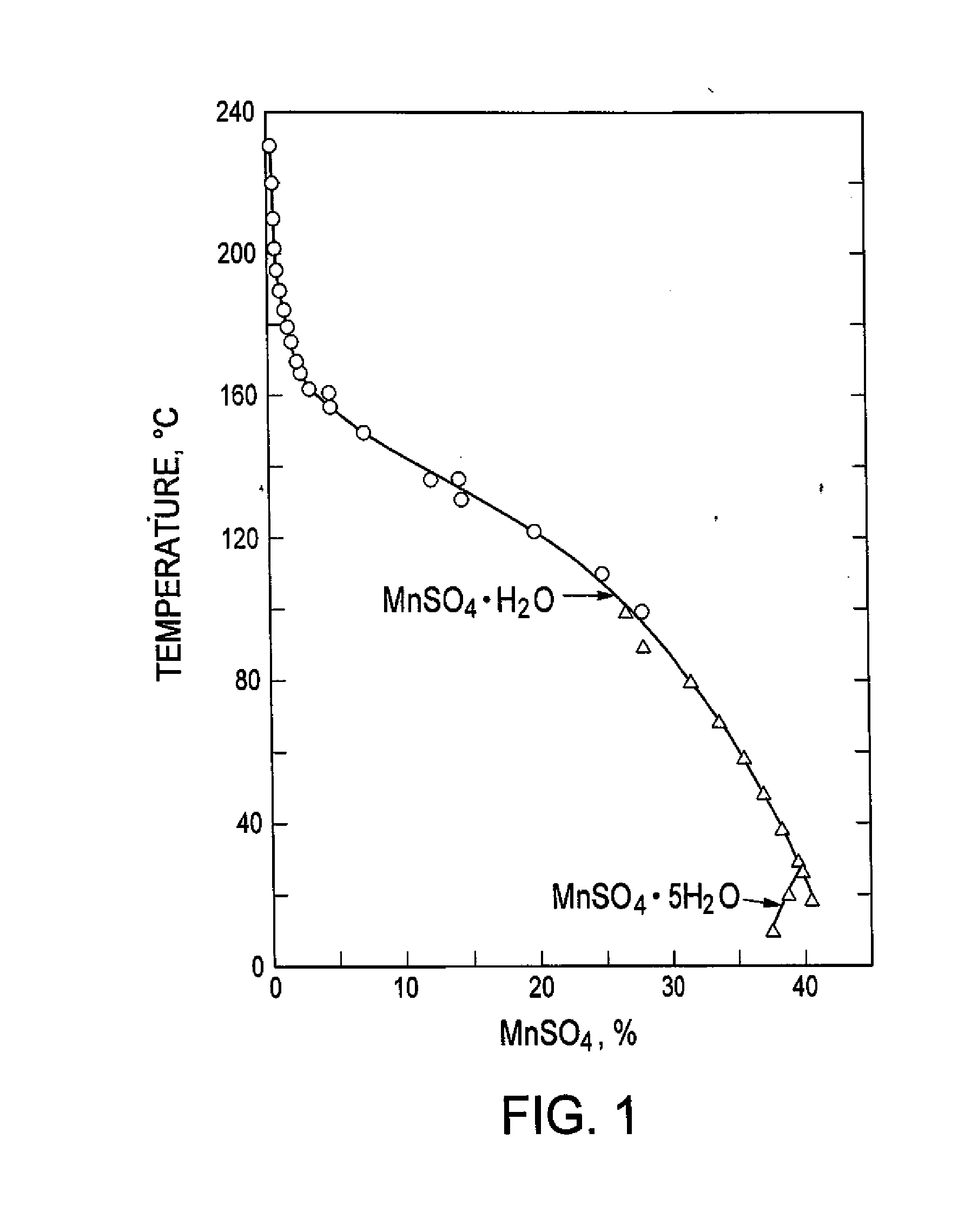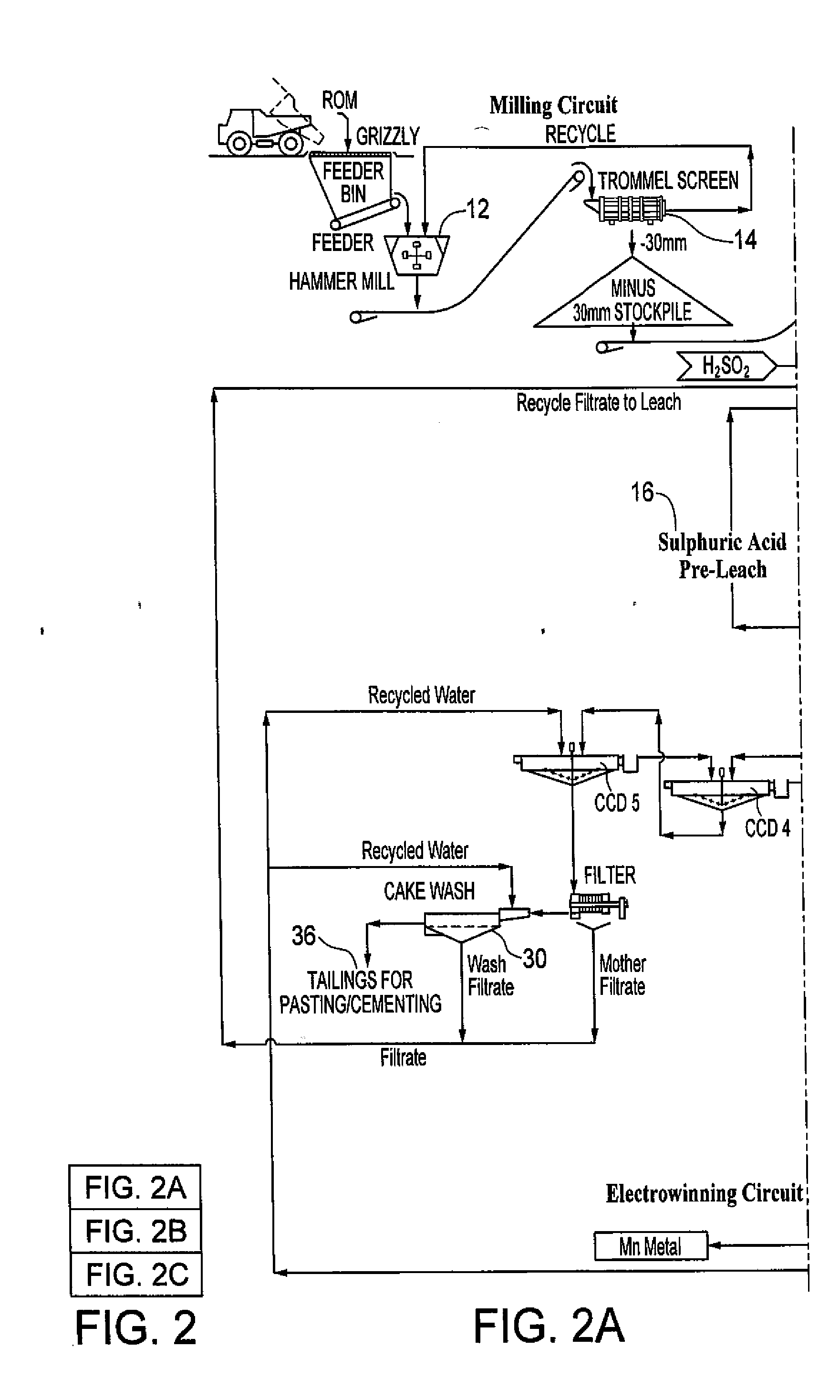Processing of manganous sulphate/dithionate liquors derived from manganese resource material
a technology of manganous sulphate and dithionate, which is applied in the direction of alkali metal sulfite/sulfate dehydration, lithium compounds, inorganic chemistry, etc., can solve the problems of inefficient use of so/sub>2 /sub>and potential precipitation of manganous, loss of product, and high cos
- Summary
- Abstract
- Description
- Claims
- Application Information
AI Technical Summary
Problems solved by technology
Method used
Image
Examples
Embodiment Construction
[0012]FIG. 2 shows the overall system / process disclosed herein. Manganese dioxide containing resource material is fed through a grate into a hammer mill 12 and from there to a trommel screen 14. Minus 30 mm resource material is stockpiled for feed into a leach system, whereas oversized material is recycled back to the hammermill.
[0013]The minus 30 mm resource material from the milling circuit is preleached with a sulphuric acid solution in a series of stirred tanks shown at 16. The resource material pulp density is 12 to 20% by weight to facilitate subsequent solid liquid separation with a leach thickener. The resource material disintegrates into smaller particles as a result of the agitation at this stage. Acid consuming resource material, e.g. calcium and barium, react with the sulphuric acid to form insoluble sulphates. The make-up water for the pre-leach comes from the counter current decantation (CCD) system 20 wash and contains manganese recovered from washing the gangue mater...
PUM
| Property | Measurement | Unit |
|---|---|---|
| temperature | aaaaa | aaaaa |
| temperature | aaaaa | aaaaa |
| temperature | aaaaa | aaaaa |
Abstract
Description
Claims
Application Information
 Login to View More
Login to View More - R&D
- Intellectual Property
- Life Sciences
- Materials
- Tech Scout
- Unparalleled Data Quality
- Higher Quality Content
- 60% Fewer Hallucinations
Browse by: Latest US Patents, China's latest patents, Technical Efficacy Thesaurus, Application Domain, Technology Topic, Popular Technical Reports.
© 2025 PatSnap. All rights reserved.Legal|Privacy policy|Modern Slavery Act Transparency Statement|Sitemap|About US| Contact US: help@patsnap.com



